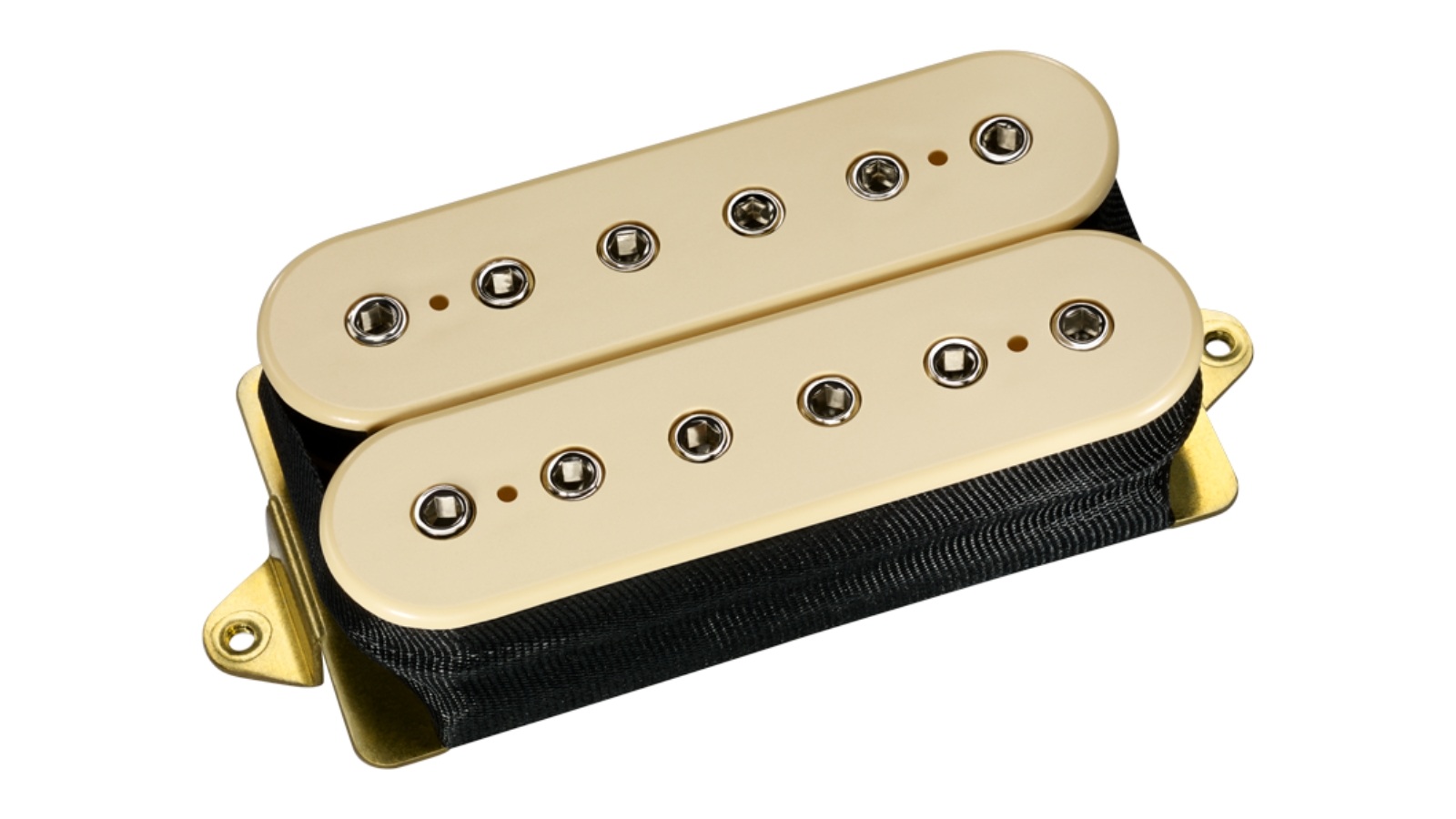Used by everyone from Kurt Cobain to Ace Frehley, the DiMarzio Super Distortion pickup changed the sound of rock – and the future of electric guitar tone
Larry DiMarzio’s Super Distortion not only presented players in the ’70s with a high-output option, it started a culture of players swapping out pickups in search of better tone

The replacement electric guitar pickup is so commonplace these days that most guitarists have swapped pickups on at least one of their guitars to improve its sound.
However, for about the first two decades of the electric solidbody guitar’s existence, very few players ever thought of changing their pickups, and the few who did found it wasn’t a very easy task.
That all changed when Larry DiMarzio created the market for replacement pickups by developing and intelligently marketing the Super Distortion humbucker pickup in the early ’70s. (See our interview with Larry for more information
DiMarzio made the Super Distortion to provide an improved alternative to the stock pickups manufactured during the late ’60s and early ’70s when companies like Gibson, Fender and Gretsch were owned by big corporations (Norlin, CBS and Baldwin, respectively) that cared more about cutting costs than satisfying players’ needs. Guitarists were also seeking ways to increase the distortion, crunch and sustain of their rigs, especially without needing to turn their amps up to ear-splitting levels or use fuzz pedals.
DiMarzio’s ingenious solution was to develop a pickup with higher output that also delivered the desirable tonal qualities that rock guitarists preferred. He designed the pickup to fit perfectly into standard Gibson humbucker mounting to minimize installation hassles, and the replacement pickup was born.
Larry DiMarzio’s design featured smaller-gauge wire and a tighter layered coil than Gibson used for pickup construction, which allowed a higher amount of turns per coil. This design significantly boosted output, particularly when combined with its strong ceramic magnet that also enhanced brightness and midrange punch.
Other distinctive features included 12 large adjustable hex Allen screw polepieces and exposed cream-colored bobbins (no cover), the latter providing a distinctive look that made DiMarzio pickups instantly identifiable (a registered trademark that DiMarzio still rigorously protects today).
Get The Pick Newsletter
All the latest guitar news, interviews, lessons, reviews, deals and more, direct to your inbox!
“You have to realise that basically anyone that’s building that kind of product is basing their design work on what I did 50 years ago,” DiMarzio told Guitarist in an exclusive interview. “In a funny way, it’s the ‘SM57’ of the guitar pickup business. It’s got a shit-ton of hits [to its credit]. And it has its own character.”
The DiMarzio Super Distortion humbucker played a major role in the sound of hard rock guitar from the mid ’70s onward as players like Rick Derringer, Buck Dharma, Elliott Easton, Ace Frehley, Steve Hunter, Ronnie Montrose, Rick Nielsen, Joe Perry, Tom Scholz, Earl Slick, Dick Wagner and many others embraced its aggressive tones.

Dimebag Darrell, Paul Gilbert, Kerry King, Mick Mars, Dave Murray and Randy Rhoads later kept the Super Distortion flame burning bright for metal during the ’80s and beyond, and in the ’90s the pickup found favor amongst the grunge and alternative crowd through players like Kurt Cobain, Kim Thayil and Lee Ranaldo.
The pickup also made a significant impact in the sound of jazz-rock fusion, thanks to guitarists like Al Di Meola, Allan Holdsworth and John Abercrombie.
Also during the ’70s, up-and-coming US guitar companies like B.C. Rich, Charvel, Dean and Hamer, boldly defying Fender and Gibson’s status quo, built numerous guitar models with DiMarzio Super Distortion pickups as standard equipment, as did several Japanese guitar companies like Aria, helping make the sound and glory of the DiMarzio Super Distortion readily accessible and affordable to the masses.
Although DiMarzio has offered a few hundred different models over the last 50 years, the Super Distortion is still going strong, thanks to its distinctive voice that is irresistible to guitarists who love the aggressive snarl and bite of late-Seventies hard rock tones.
The pickups sound magical when paired with a circa ’70s-through-mid-’80s Marshall, but they also work great with numerous Mesa Boogie amps as well as many modern high-gain beasts. 500k ohm volume and tone pots with a .022uF tone capacitor are recommended for optimal performance.
Chris is the co-author of Eruption - Conversations with Eddie Van Halen. He is a 40-year music industry veteran who started at Boardwalk Entertainment (Joan Jett, Night Ranger) and Roland US before becoming a guitar journalist in 1991. He has interviewed more than 600 artists, written more than 1,400 product reviews and contributed to Jeff Beck’s Beck 01: Hot Rods and Rock & Roll and Eric Clapton’s Six String Stories.





![[from left] George Harrison with his Gretsch Country Gentleman, Norman Harris of Norman's Rare Guitars holds a gold-top Les Paul, John Fogerty with his legendary 1969 Rickenbacker](https://cdn.mos.cms.futurecdn.net/TuH3nuhn9etqjdn5sy4ntW.jpg)





